
The Epiphone 1802T / ET-270 launched in 1970 as part of the new non-USA Epiphone range designed to offer a good quality product at a price-point significantly lower than the previous Kalamazoo-made Epiphones. At the time, the world was awash with new guitars from numerous Japanese guitar factories ranging from pretty good to decidedly mediocre. But the new Epiphone models were built by one of the best Japanese makers, at the Matsumoku plant in Matsumoto, and although based on existing models (in this case the Aria 1802T) the new Epiphones were further enhanced, adding a traditional Epiphone-style 3+3 headstock with (eventually) an inlaid logo, and bright red finishes not applied to other guitars from the plant.
Dating early Japanese Epiphone guitars is not easy. There is no date stamped on the guitar, no potentiometer codes, and no date information (as far as known) embedded into the serial number. However this guitar would appear to be from very late 1970 through to mid/late 1971. Production lasted approximately four years from mid-1970 until mid/late 1974, during which time several subtle changes were made to the design. The earliest examples shared the same Fender-style single-side headstock as the Aria 1802T, (have a look at an early Fender-headstock ET-270 in the 1970 Rosetti Epiphone catalogue); changing to the more familiar two sided headstock by the end of 1970. Other early features include large fret dots (smaller dots sometime in 1971), a silk-screened Epiphone logo (changed to an inlay circa late 1971 / early 1972), unbranded multi-ply pickguard (changed to single-ply with Epiphone 'E' circa 1973), unbranded truss rod cover (with Epiphone 'E' circa 1973).
So hailing from early or mid 1971, this guitar is technically still named the Epiphone 1802T (though practically nobody knows it by this), as the name Epiphone ET-270 is not used for this guitar until late 1971 / early 1972. To be really pedantic, this guitar was sold in the UK by the then Epiphone distributor Rosetti, who marketed it as the Epi 9525. Check it out in the 1971 Rosetti catalogue.
The Epiphone 1802T had a list price of $99.50, with an optional hard case at $40, or durabilt case at $13 (1st September 1971). In the UK, the Epi 9525 retailed at £52.
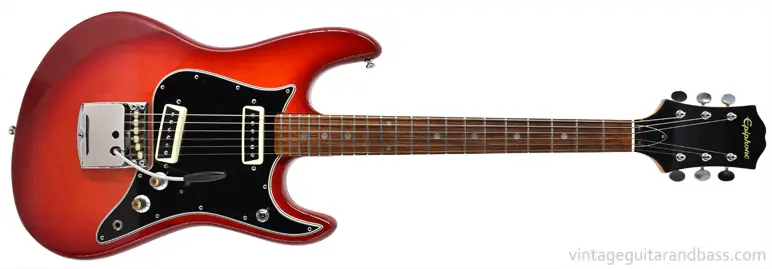
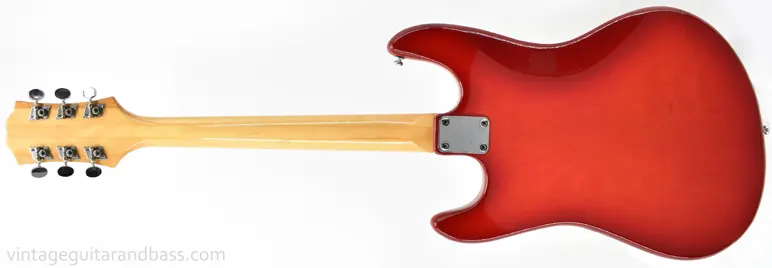
The 1971 Epiphone price list describes model 1802T as follow:
Double cutaway, cherry red finish, hardwood adjustable neck, rosewood fingerboard with dot inlays, two pickups, toggle switch, tone switch, volume and tone control, vibrola, chrome plated hardware.
This guitar was built at the Matsumoku factory where a very similar model, the Arai/Aria 1802T had been in production from at least 1968, typically in sunburst or white, and branded Arai, Aria Diamond or Arai Diamond. But the Epiphone was a step above the original, with its nicely finished neck, 3+3 headstock and its striking red paint. It also had a more traditional Epiphone look with its headstock style- the Aria 1802T (and indeed the very earliest Epiphone equivalents from 1970) had a one-sided Fender-style peghead. By mid 1972 it would be upgraded further with an inlaid pearl headstock logo and the Epiphone 'E' logo on its truss rod cover and scratchplate. 1970 and 1971 guitars (like this one) have a simple gold silk screen logo, and no Epiphone 'E's.
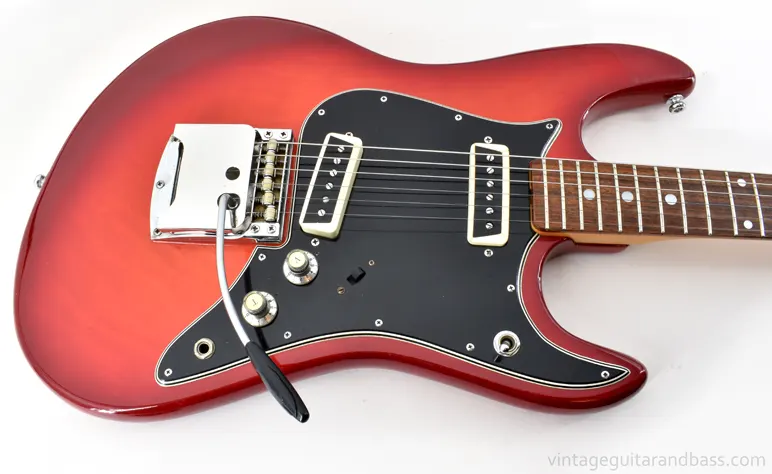
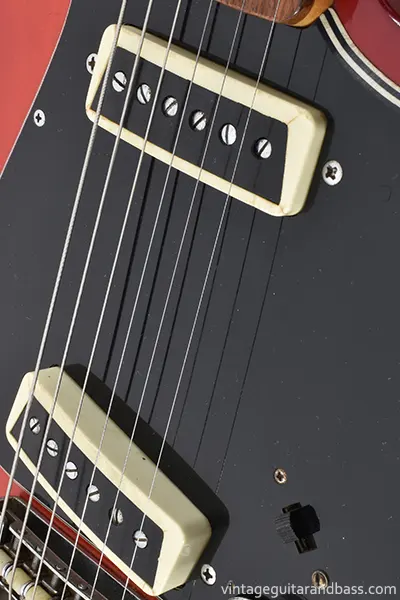
Like the Aria 1802T from which it is derived, the Epiphone is fitted with single coil 'trapezoid' pickups.
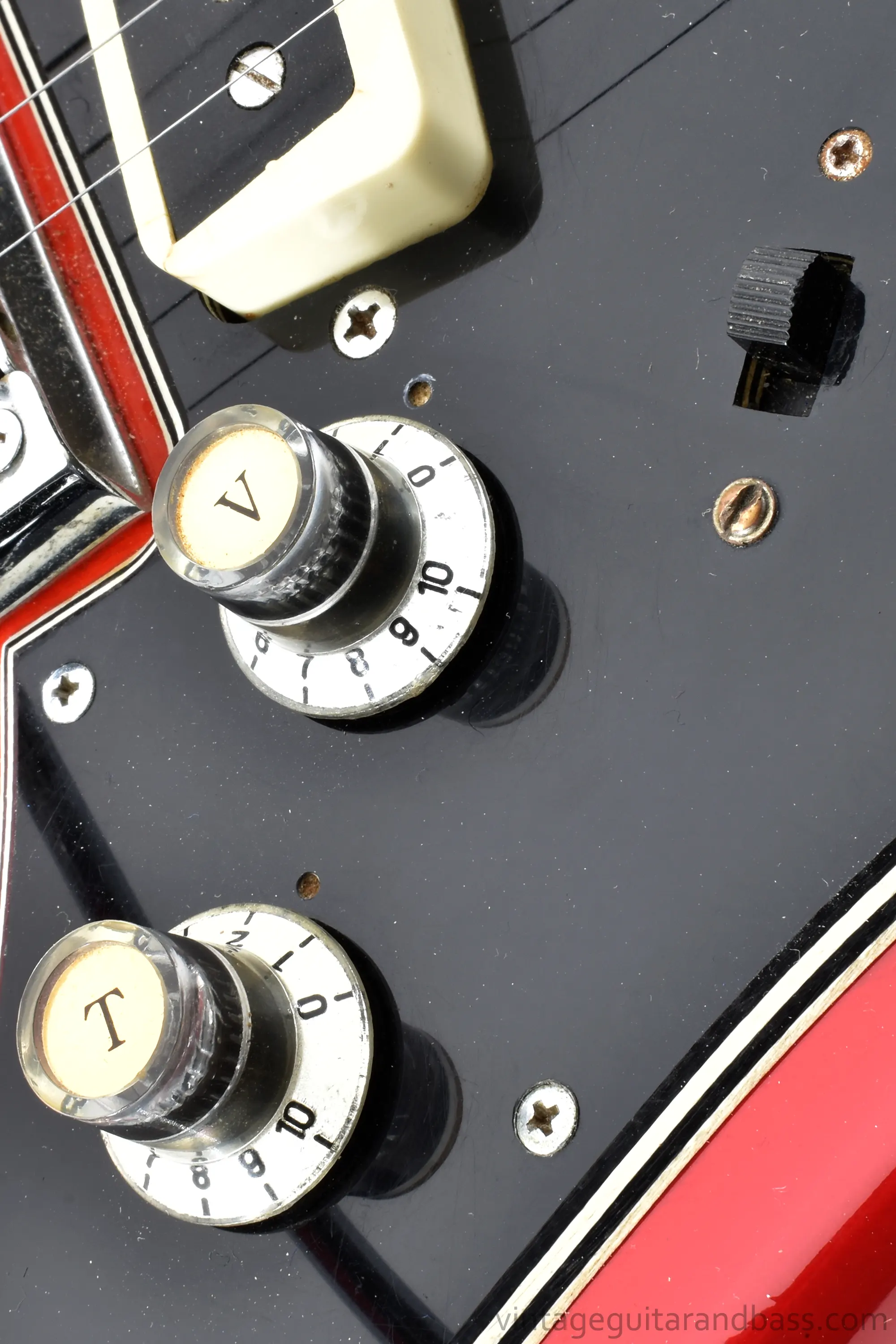
The rotary control knobs are standard Matsumoku metal-capped control knobs - in silver as was typically the case for Japanese Epiphones. The tone switch is a simple two-way on/off slider.
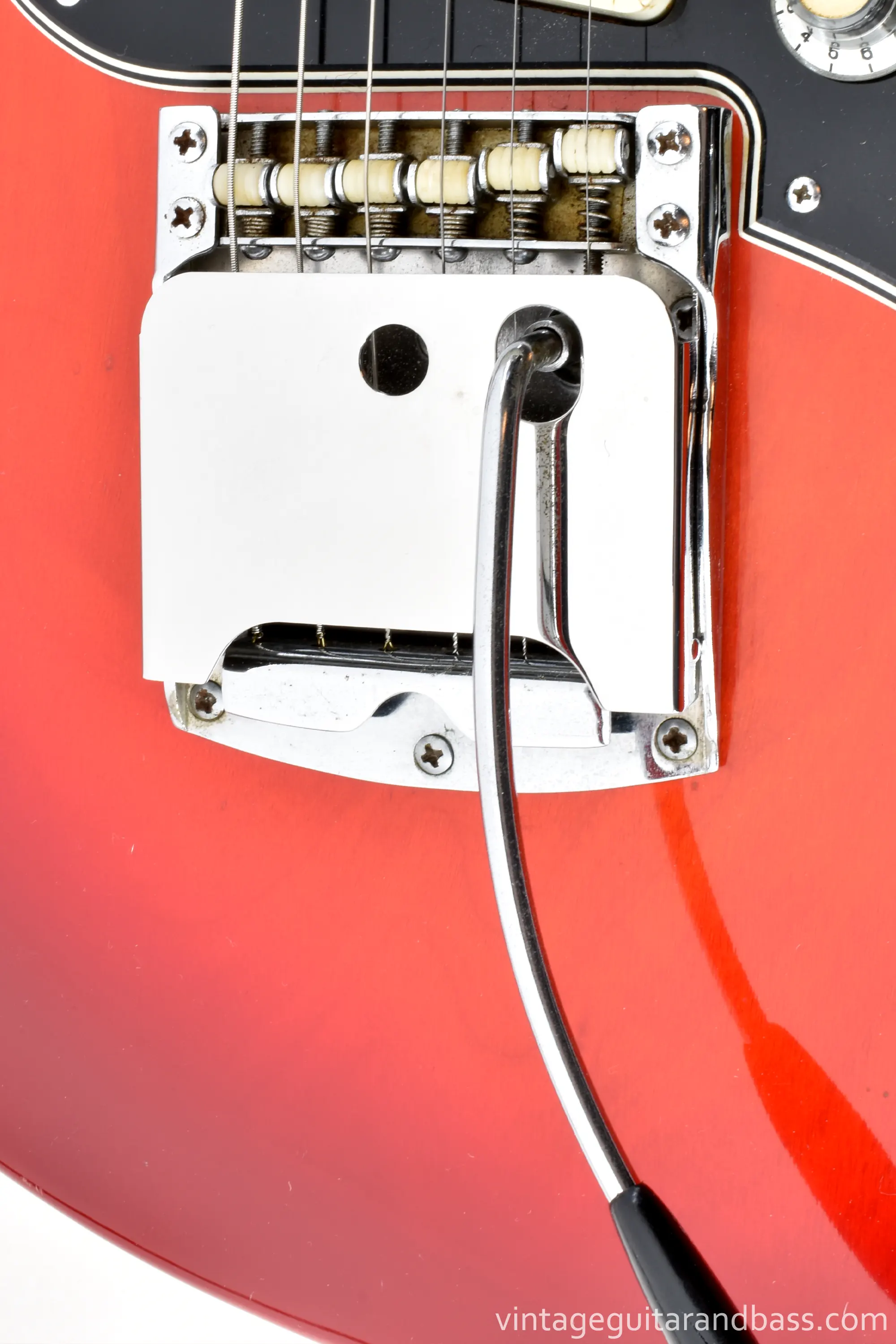
Epiphone 1802T bridge detail. The combined bridge / vibrola tailpiece was first fitted to Matsumoku-built solid bodies from the mid-1960s.
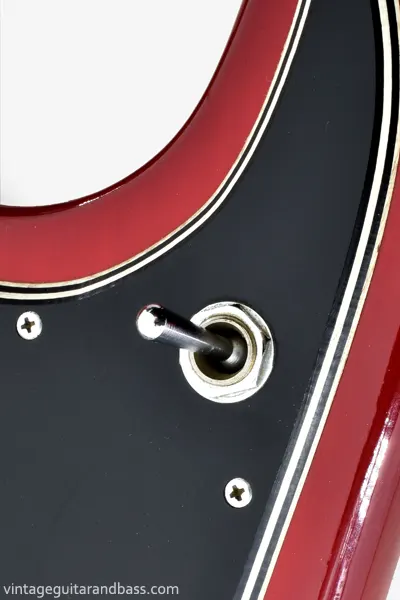
The pickup selector switch is scratchplate mounted and situated below the neck pickup.
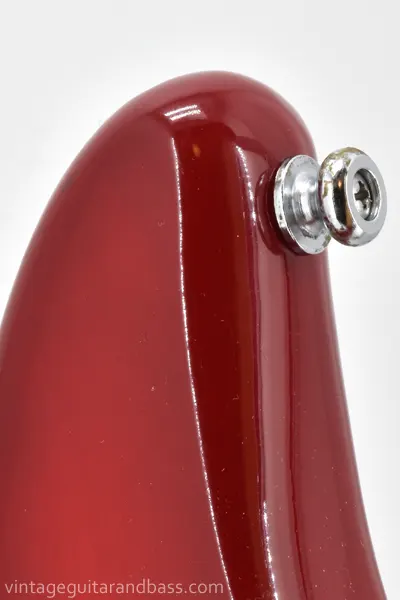
Epiphone 1802T strap button. Like many of the components of this guitar, these chrome-plated strap buttons are identical to those used on numerous guitars from the Matsumoku factory.
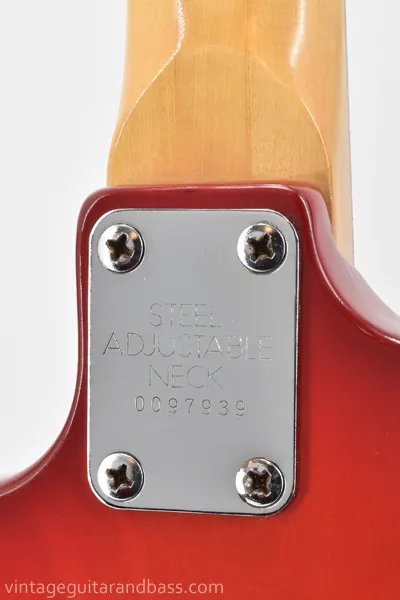
Epiphone 1802T neck plate with Matsumoku serial number.
Matsumoku guitars from the mid-1960s until the mid-1970s pretty much always had some neck plate markings. Usually (in large font) STEEL REINFORCED NECK, or as seen here STEEL ADJUSTABLE NECK. The font is quite distinctive. Often a serial number and / or MADE IN JAPAN is also present, though this is less often the case with Epiphone-branded guitars. The serial number naturally referred to Matsumoku production records, and Epiphone would often add their own serial number either on a neckplate sticker or (in the case of the 5102T semi-acoustic) in a soundhole label. Unlike later instruments, early 1970s Matsumoku serial numbers seemingly have no date information encoded within them.
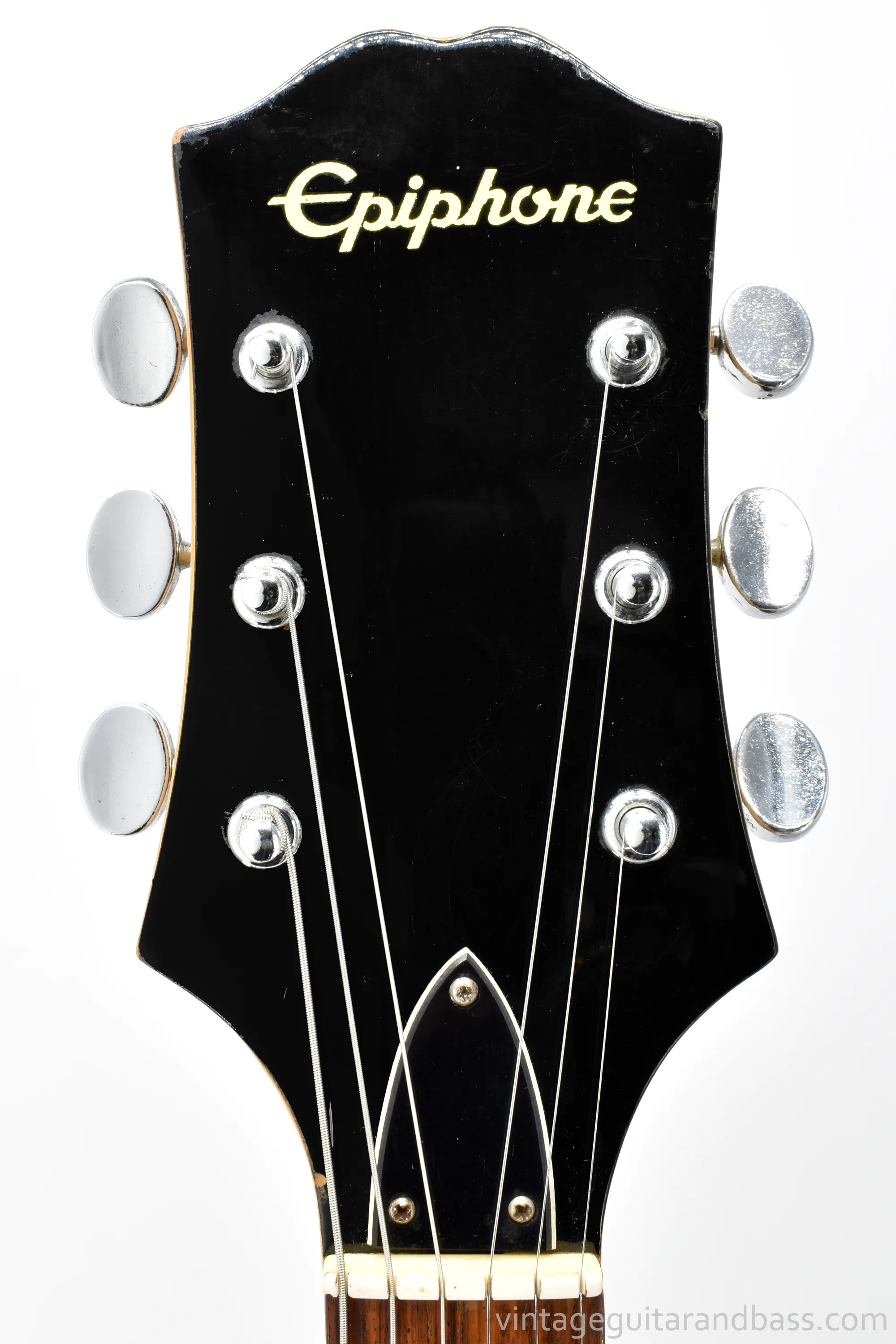
Epiphone 1802T headstock front. The Epiphone logo is silk-screened onto the headstock. Sometime between late-1971 and mid-1972 this was changed to a pearl inlay, with the price rising slightly and the name changing from 1802T to ET-270 about the same time.
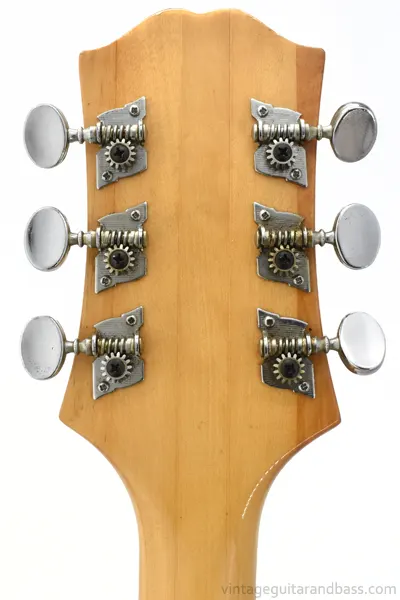
Epiphone 1802T headstock reverse. This guitar is fitted with Japanese open gear individual tuners.
Extra content on this guitar is included in the Supporting Members area here



$150
$1099
$549
€1299
£50